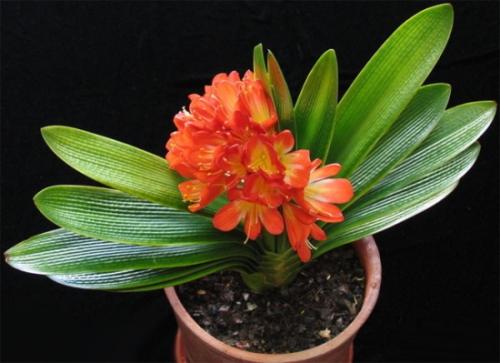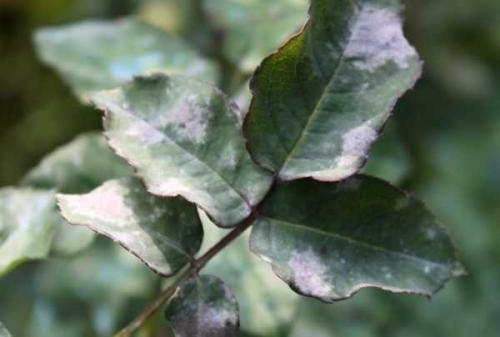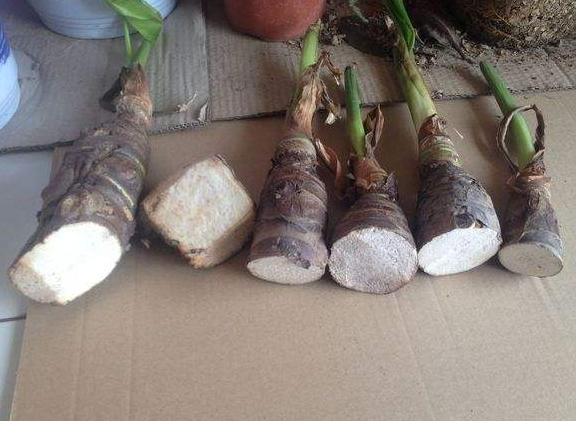What is the reason why the leaves of Cymbidium turn yellow?
Clivia is a kind of flower that is difficult to plant. It is afraid of cold and not cold-resistant. It likes humid environment. It is a famous greenhouse flower and is suitable for indoor cultivation. If you choose as an indoor flower, if the temperature is appropriate, you can bloom around the Spring Festival, so what is the reason for the yellow leaves of Clivia? How do you do that?
The reason for the yellow leaves of Clivia: temperature

The suitable temperature for Clivia growth is 15~25℃. The temperature difference between day and night is 8~12℃, which is suitable for the growth of Clivia. Summer temperatures over 30℃ for a long time into semi-dormancy. At this time, if the air humidity is lower than 60%, the leaves of Clivia will become light yellow or even wilted; if the humidity is higher than 90%, the stems and leaves will grow long. In order to prevent these undesirable phenomena from occurring, measures should be taken to cool down, and then ventilation and light transmission should be carried out to control humidity. When the temperature drops below 8℃ in winter, Clivia basically stops growing. If the temperature drops below 6℃, freezing injury will occur, causing the leaf tip and leaf edge to turn green and yellow, and even yellow-white necrosis marks.
The second reason for the yellow leaves of Clivia: humidity
Clivia is a humid plant, the growth environment humidity requirements are relatively high. Its optimum relative humidity range is 70%~80%. Clivia leaves in this humidity environment tender green, veins clear, leaves short, wide, neat, ornamental value. If the pot soil is too dry for a long time and the temperature is high, it is easy to make the leaves yellow. But long-term watering too much, but also easy to lead to hypoxia, hindered the normal respiration of plants, leading to Clivia root rot or even death.
Clivia leaves yellow reason 3: soil fertilizer
Clivia likes loose fertile sandy soil, soil hardening and insufficient fertilizer supply, which will make the leaves yellow and affect flowering. Generally, fertilization can be carried out in spring and autumn within one year. Rotten leaves must be fermented before they can be used. If they are not fermented, the roots will be burned easily. Clivia must be replaced once a year. Clivia maintenance site temperature above 25℃, it is necessary to lose weight or stop fertilizer, so as not to fertilize too much to burn the fleshy roots, if the temperature can be reduced to 20℃ below, can still be fertilized.
The fourth reason for yellow leaves of Clivia: light
Clivia is a semi-positive flower, like weak scattered light, not resistant to strong light, light too strong easy to cause sunburn, light leaves from green to yellow, heavy leaves dehydration dry death. Short days in winter and spring are more conducive to flowering. Good illumination is an important condition to ensure that the gentleman orchid is big and colorful. However, if the light is too dark and the light is insufficient for a long time, it will also make the leaves lose luster, the old leaves are dark green, and the new leaves are thinned, yellow or yellow-green (shade yellow). At this point, clivia should be moved to a slightly stronger place or supplementary lighting. Clivia leaves have phototaxis, to light stocking, can maintain the lateral as a line, as a fan shape.
5 Reasons for Yellow Leaves of Clivia: Ventilation
Clivia robust fleshy roots in the storage of sufficient water at the same time, but also for its survival of the soil put forward higher requirements. Only the nutrient soil with good air permeability, loose texture and rich humus is suitable for the growth of succulent roots of Clivia. Clivia placed too dense and the surrounding environment closed, are hindering air circulation, so that thin yellow plants thin. Therefore, indoor ventilation should be strengthened to avoid excessive density.
Time: 2019-04-18 Click:
- Prev

Common diseases and insect pests of rose rose and their control
Many rose rose flower lovers will encounter four common diseases of rose rose flowers, such as black spot, powdery mildew, branch blight and root cancer, and occasionally other diseases such as rust, exposure fungus, anthracnose. Etc., but not as serious as the first four diseases
- Next

What if dripping Guanyin has rotten roots?
Dripping Guanyin is prone to rot in summer, mainly caused by the wet soil. Pull up the dripping Guanyin, cut off the rotten roots, and wear rubber gloves when cutting the roots (Dishui Guanyin is poisonous! Be careful if you have skin allergies.) Cut off a little bit of healthy tissue near the rotten part
Related
- Fuxing push coffee new agricultural production and marketing class: lack of small-scale processing plants
- Jujube rice field leisure farm deep ploughing Yilan for five years to create a space for organic food and play
- Nongyu Farm-A trial of organic papaya for brave women with advanced technology
- Four points for attention in the prevention and control of diseases and insect pests of edible fungi
- How to add nutrient solution to Edible Fungi
- Is there any good way to control edible fungus mites?
- Open Inoculation Technology of Edible Fungi
- Is there any clever way to use fertilizer for edible fungus in winter?
- What agents are used to kill the pathogens of edible fungi in the mushroom shed?
- Rapid drying of Edible Fungi

